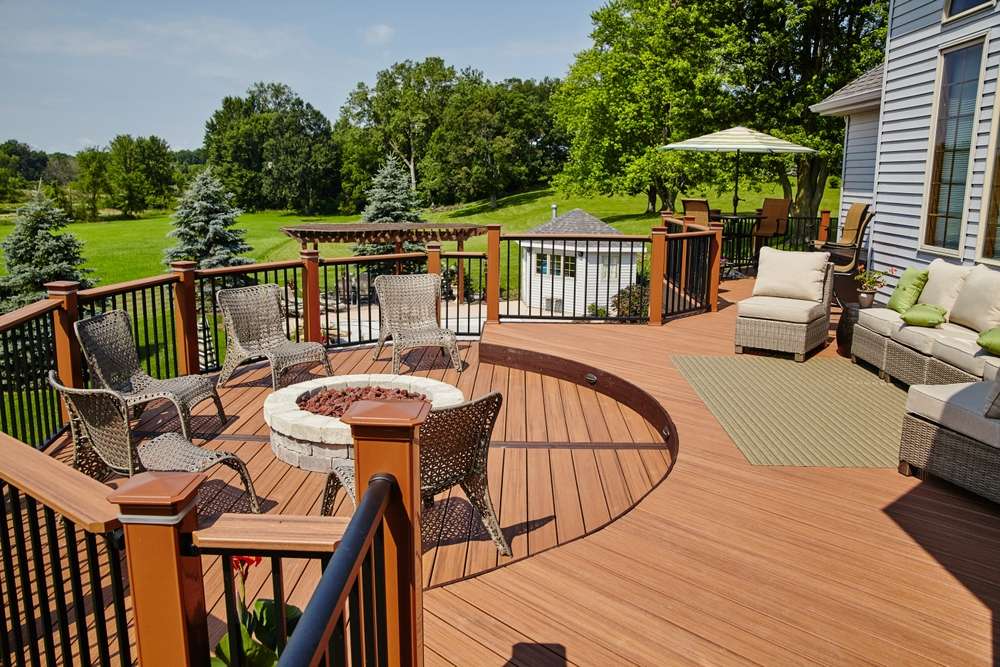Creating an outdoor deck is a delightful way to enhance the livability of your outdoor space. However, choosing the right materials is crucial not only for the aesthetic appeal but also for the durability and longevity of your deck. If you are a consumer aiming to balance quality with an affordable budget, understanding the various durable outdoor decking materials designed to withstand the elements is essential.
Wood Decking
Wood is traditionally the most popular decking material due to its natural beauty and relatively lower upfront cost. However, not all woods are created equal. For those seeking durability:
- Ipe (Brazilian Walnut): Ipe is one of the most durable woods available, known for its impressive density. Its natural oils and high tannin content make it resistant to decay, insects, and mold. Although more expensive than other woods, its long lifespan offsets the initial cost.
- Cedar and Redwoods: Naturally resistant to rot and pests, these woods are softer than Ipe but more affordable. They require regular maintenance, such as sealing, to maintain their resilience and appearance.
- Pressure-Treated Pine: This is a budget-friendly option widely used for decks. Pressure-treated lumber is chemically treated to resist rot and insects. It’s important to choose high-grade treated timber to ensure better durability and performance.
Composite Decking
Composite decking has gained significant popularity due to its blend of natural wood fibers and synthetic, recycled materials. Here are some benefits of composite decking:
- Low Maintenance: One of the primary advantages of composite decking is its low maintenance requirement. It doesn’t need painting, staining, or sealing. Regular cleaning with soap and water is usually sufficient.
- Weather Resistance: Composite decking effectively withstands various weather conditions like sunlight, heat, and rain. It is less prone to warping, splintering, or cracking compared to traditional wood.
- Eco-Friendly: Many composite decking brands use recycled materials, reducing the environmental footprint.
- Variety and Aesthetics: Available in various colors and textures, composite deck boards can mimic the appearance of natural wood without the upkeep.
While composite decking may have a higher upfront cost, its longevity and minimal maintenance often result in long-term savings, making it a wise investment for many homeowners.
Plastic Decking
Plastic decking is made entirely from PVC or other synthetics. Here’s why it might be a good option for your deck:
- Waterproof: Since it is non-porous, plastic decking is completely waterproof, making it a perfect choice for areas with high humidity or near water bodies.
- Durable and Long-Lasting: Plastic decking resists rot, insects, and UV damage. It won’t stain or fade as easily, making it a long-lasting material.
- Environmentally Friendly Options: Some brands use recycled plastics to manufacture their decking, contributing to resource conservation.
- Low Maintenance: Much like composite decking, plastic decking only requires basic cleaning to maintain its appearance and durability.
However, it’s worth noting that entirely plastic decks can expand and contract with temperature changes, so proper installation is critical to avoid issues like buckling.
Aluminum Decking
Aluminum may not be the first material that comes to mind for decking, yet it offers some impressive benefits:
- Durability: Aluminum is a highly durable material that is resistant to corrosion, rust, and decay. Its strength makes it an excellent choice for areas experiencing severe weather.
- Fire Resistant: Aluminum decking is non-combustible, making it a safer option in areas prone to wildfires.
- Low Maintenance: Similar to plastic and composite, aluminum doesn’t require ongoing maintenance. A periodic wash is generally all it needs.
- Lightweight and Easy to Install: Despite its strength, aluminum is lightweight, making it easier to handle and install.
- Recyclability: Aluminum is 100% recyclable, making it an environmentally responsible choice.
Aluminum decking can be more expensive than other types due to its many advantages, yet its durability and lack of maintenance usually result in lower lifetime costs.
Capped Composite Decking
Capped composite decking is an advanced version of traditional composite decking, consisting of a composite core encased in a protective shell. This offers added benefits:
- Increased Protection: The cap protects the composite material from UV rays, moisture, stains, and scratches, further enhancing its durability.
- Variety in Appearance: Capped composite decks offer an array of colors and textures that closely mimic natural wood while maintaining resilience.
- Enhanced Longevity: The protective shell significantly extends the lifespan of the deck, allowing it to withstand harsh conditions longer.
- Easy Maintenance: Cleaning is simple and hassle-free, requiring minimal effort to retain its look.
Capped composite decking sits at a higher price point than standard composite materials, yet the added protection contributes to a more durable and aesthetically appealing deck, justifying the investment for many homeowners.
Choosing the Right Material
When deciding on the ideal decking material, consider:
- Budget: Initial cost versus long-term maintenance and replacement costs should factor into your budget considerations. While some materials require higher upfront expenses, they often provide cost savings over time due to durability and minimal upkeep.
- Climate: Your geographic location and local weather patterns can impact material performance. Consider materials that resist moisture, UV rays, or extreme temperatures according to your local climate.
- Aesthetic Preferences: The desired appearance of your deck is another essential factor. Choose materials that align with your preferences, whether you desire a natural wood look or a more modern, sleek appearance.
- Environmental Considerations: For eco-conscious consumers, the use of recycled materials and the recyclability of decking options may play a significant role in decision making.
- Usage and Traffic: Consider how you plan to use your deck. High-traffic areas or spaces regularly hosting heavy furniture may benefit from more resilient materials.
Carefully weighing these factors in line with personal preferences and lifestyle can lead to a more informed and satisfactory decking material choice.
Selecting durable outdoor decking materials involves understanding the characteristics, advantages, and limitations of each option. Whether prioritizing cost, longevity, aesthetic appeal, or environmental benefits, multiple materials cater to varying needs and conditions. An educated choice will ensure not only an aesthetically pleasing and functional space but also a wise financial investment for years of outdoor enjoyment.



